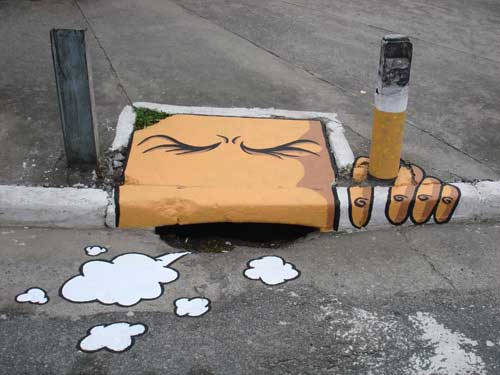If writing or drawing on walls alone could be called Graffiti, we could have testified and traced its practice right from the world of the pre historic men. Early pre historic fossils show evidences of murals and wall paintings used both for communication purposes and decoration. Or, Michelangelo’s great wall paintings on the walls and ceiling of the Sistine Chapel could also be called Graffiti. So, what is it that sets it apart? What is it that gives it its unique individuality and status? To see through its significance and characteristic features, we first would need to take a brief account of what is Graffiti as a concept and thereby, trace its origin.
Graffiti’s have existed in the human civilization since ages. They were found in Greek and Roman cultures as well as on the walls of The Church of the Holy Sepulcher inJerusalem. The word ‘graffiti’ that comes from the Italian, ‘graffiato’ meaning “scratched” which represents that form of art that involves public markings on walls, using any kind of writing or painting medium. Modern day Graffiti, however, involves the use of spray paint and markers and bold and bright writings and images.
New York Subway graffiti has inspired the entwining of the Hip hop culture ofAmericawith graffiti painting in general. They can reach out to the masses quicker than many other means of communication. Graffiti with social, political or environmental messages have a voice louder and stronger than a rally of people shouting out their views. This is perhaps the reason why this street art has gained so much importance and popularity all over the world. Though, to some, graffiti is vandalism and a crime, punishable by the law it has proved to be a means powerful enough to express public views on a public forum. While some graffiti are offensive or threatening, some can portray high art and decoration. One may not like or approve of it, but surely cannot deny its power and significance.America, the greatest influence on all cultures is the leading nation in graffiti art.
As Terrance Lindall, who is an artist, as well as the executive director of Williamsburg Art and Historic Centre, remarked, “Graffiti is revolutionary, in my opinion, and any revolution might be considered a crime. People who are oppressed or suppressed need an outlet, so they write on walls—it’s free.”
Whether it is about a rebellion against the government, the social norms, the political scenario or any other issue, graffiti has been used to say it all. Against odds of being penalized by the government, laws against the art form, restriction on the sale of paints, graffiti artists have continued to leave their mark on the walls of the cities and the walls of our minds.


